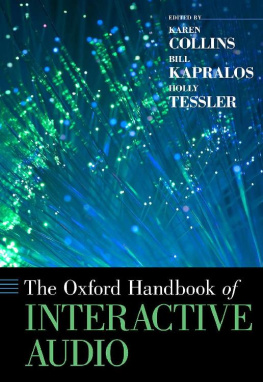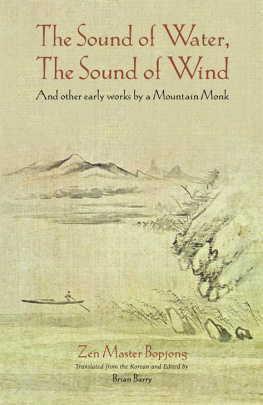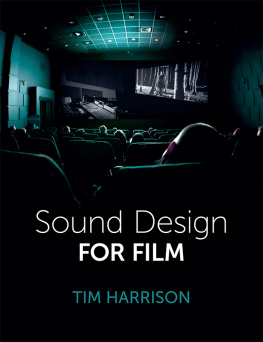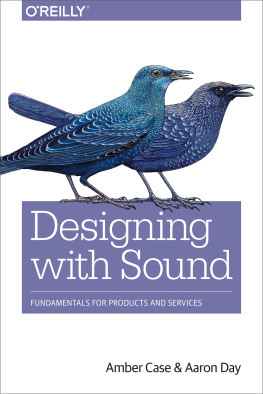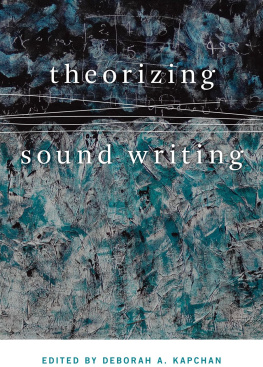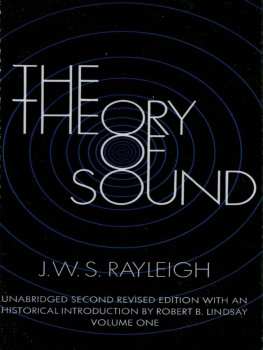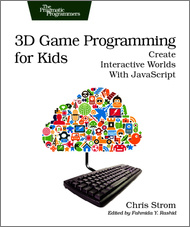Karen Collins - Studying Sound: A Theory and Practice of Sound Design
Here you can read online Karen Collins - Studying Sound: A Theory and Practice of Sound Design full text of the book (entire story) in english for free. Download pdf and epub, get meaning, cover and reviews about this ebook. year: 2020, publisher: MIT Press, genre: Children. Description of the work, (preface) as well as reviews are available. Best literature library LitArk.com created for fans of good reading and offers a wide selection of genres:
Romance novel
Science fiction
Adventure
Detective
Science
History
Home and family
Prose
Art
Politics
Computer
Non-fiction
Religion
Business
Children
Humor
Choose a favorite category and find really read worthwhile books. Enjoy immersion in the world of imagination, feel the emotions of the characters or learn something new for yourself, make an fascinating discovery.

- Book:Studying Sound: A Theory and Practice of Sound Design
- Author:
- Publisher:MIT Press
- Genre:
- Year:2020
- Rating:4 / 5
- Favourites:Add to favourites
- Your mark:
- 80
- 1
- 2
- 3
- 4
- 5
Studying Sound: A Theory and Practice of Sound Design: summary, description and annotation
We offer to read an annotation, description, summary or preface (depends on what the author of the book "Studying Sound: A Theory and Practice of Sound Design" wrote himself). If you haven't found the necessary information about the book — write in the comments, we will try to find it.
Studying Sound: A Theory and Practice of Sound Design — read online for free the complete book (whole text) full work
Below is the text of the book, divided by pages. System saving the place of the last page read, allows you to conveniently read the book "Studying Sound: A Theory and Practice of Sound Design" online for free, without having to search again every time where you left off. Put a bookmark, and you can go to the page where you finished reading at any time.
Font size:
Interval:
Bookmark:
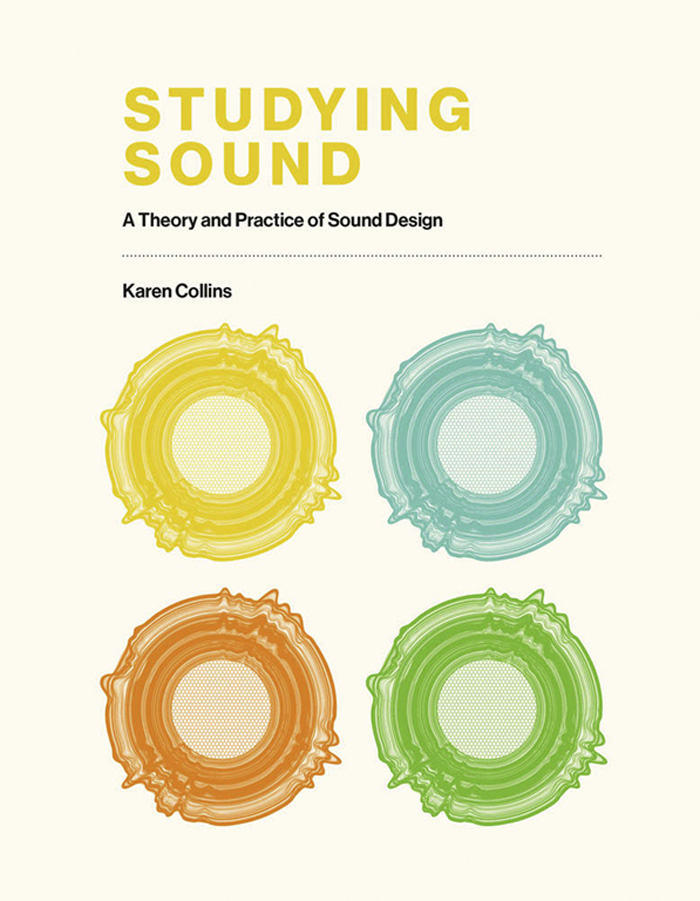
Karen Collins
The MIT Press
Cambridge, Massachusetts
London, England
2020 Massachusetts Institute of Technology
All rights reserved. No part of this book may be reproduced in any form by any electronic or mechanical means (including photocopying, recording, or information storage and retrieval) without permission in writing from the publisher.
This book was set in ITC Stone Serif Std and ITC Stone Sans Std by New Best-set Typesetters Ltd.
Library of Congress Cataloging-in-Publication Data is available.
ISBN: 978-0-262-04413-4
10 9 8 7 6 5 4 3 2 1
d_r0
This book would not have been possible without the many students who contributed to my lectures in sound design at the University of Waterloo and guest lectures around the world. I am grateful to their input on learning methods and the discussions we had about sound design. I also must acknowledge the input of those who contributed to lectures and workshops at academic and industry conferences and organizations where the teaching of sound was often at the forefront.
Some of the ideas presented here are based on work I have produced with coauthors, colleagues, and supervisors over the years, and I must also acknowledge their intellectual contributions to my research in sound: Bill Kapralos, Philip Tagg, Paul Thberge, Ruth Dockwray, Alexander Hodge, Michael Dixon, and Kevin Harrigan: thank you!
The accompanying photos and videos found on the studyingsound.org website were taken with Andrew Smith and Charlotte Baker, who also took the photos for this book. They also contributed most of the audio examples online, and Charlotte built out the website.
The funding for some of the experiments I have undertaken over the years that contributed to my thinking about sound was provided primarily by the Social Sciences and Humanities Research Council of Canada. I am very grateful for their continued support.
The composer John Cage tells the following story in his book Silence: after he played the same sound on a loop nonstop for fifteen minutes to a class of students, a woman got up and ran screaming from the room, Take it off, I cant bear it any longer! Cage turned the sound off, only for another student to ask, Whyd you take it off? It was just starting to get interesting (2013, 93). Throughout this book, I hope that you will learn to find the interesting in sound. I aim to take you on a journey from being the person who might run out of the room screaming in annoyance, to being someone who is very comfortable thinking and talking about sound, who can focus on sound and learn to listen to different aspects of sound. A person who finds that the more they listen, the more interesting their world becomes.
Other books about sound design are available, but in my experience, sound design tends to be taught as sound for moving image (that is, sound for film/television, animation, theater, or games). The reader is left with no time to cultivate an appreciation of just sound, or to develop a language and rhetoric of sound on its own, to explore the potential that lies in sound as a medium and as a rhetorical device. The complexity of sound on its own is often rushed through in order to get to the technical aspects of sound for moving image. Part of this oversight is the fault of an educational system that focuses on other aspects of the production of media, and the entire world of sound is often forced into a thirty-hour course over one semester. The result is that sound designers are always enslaved to the image, creating sound for that purpose, rather than developing their skills in actually designing sound. Im not suggesting that sound design for moving image doesnt have a purpose: clearly, it has a very specific purpose. Ive spent years studying the relationship that sound has to image, and image to sound, and at this point published seven books and countless research papers on that very subject. However, sound for moving image has often assumed the role of a subordinate: sound is there, we are told, to support the dominant image. The eye rules supreme in our ocular-centric Western culture. Is it any surprise that image dominates sound design practice and education, too? Of course, most sound design jobs are in film or games, so its understandable that sound design programs focus on sound for moving image, but having a background in sound-for-image misses out on all the possibilities that can be created by sound design as just sound design.
An interview I conducted with a video game sound designer, Adele Cutting, made me think there may be a better way to teach sound design in schools, by focusing on sound before moving on to sound for picture. Cutting had been hired to design the sound for an audio-only video game: that is, a game designed with little to no visual component. She explained some of the differences when theres no image to design to:
I worked on Audio Defence: Zombie Arena (Somethin Else 2014), the audio-only game, the zombie shooter, and thats like the Holy Grail for a sound designer, isnt it? An audio-only game! It was a short turnaroundlike four weeksto do all the sounds. And it took me a good couple of daysprobably three dayswhich is a lot of time when youve only got four weeks, to get my head around it. Because all these tricks that I did [with visuals]: Say, you were making a giant sound, you learn every time all these tricks to make it weighty and heavy. But when theres no giants foot falling [visually], it didnt work. I really had to get my head around it. That there was no visual clue to hang on with, because Im always talking about how audio fills in, how audio is the glue that holds everything together, and we fix things. We make things look better when the animator hasnt had time to do this, so well put a sound in, so nobody notices. Were always fixing things, and if things are far too slow, you can add audio and it speeds it up. You can add audio and make it go slower, but all of a sudden, [without visuals] its just you. I found that game at the start very, very difficult because you have to be so focused. There cant be any fat on your sounds. Its just got to be the one thing that you need to hear, and you cant mix in [with visuals].... I found myself chucking a lot of things out with the sound, to get the focus on it.... I felt it was so important that if there was only one sound going to be playing, or if you could only focus on one thing at once, it had to be the right thing. (quoted in Collins 2016, 119)
I am proposing that sound design, as a practice, may be better approached as an art form that stands alone from image, prior to learning about the complex things that happen when we put sound and image together. In other words, before we learn to put sound to image (looking and listening), sound designers are better served learning to just listen. Ive designed this book based on my own teaching of sound design for about fifteen years now at several universities and in industry presentations and workshops, with the aim of helping others to structure a course in sound design beyond image. In an ideal world, students would then go on to learn sound for moving image in another course, and sound for interactive media in yet another course. We dont often get the luxury of teaching multiple courses on sound, however. Anyone studying visual production would get all kinds of courses in drawing, illustration, painting, printmaking, typography, digital arts, graphic design, and so on; sound designers rarely get that same kind of scaffolded and multifaceted approach to learning.
Next pageFont size:
Interval:
Bookmark:
Similar books «Studying Sound: A Theory and Practice of Sound Design»
Look at similar books to Studying Sound: A Theory and Practice of Sound Design. We have selected literature similar in name and meaning in the hope of providing readers with more options to find new, interesting, not yet read works.
Discussion, reviews of the book Studying Sound: A Theory and Practice of Sound Design and just readers' own opinions. Leave your comments, write what you think about the work, its meaning or the main characters. Specify what exactly you liked and what you didn't like, and why you think so.

